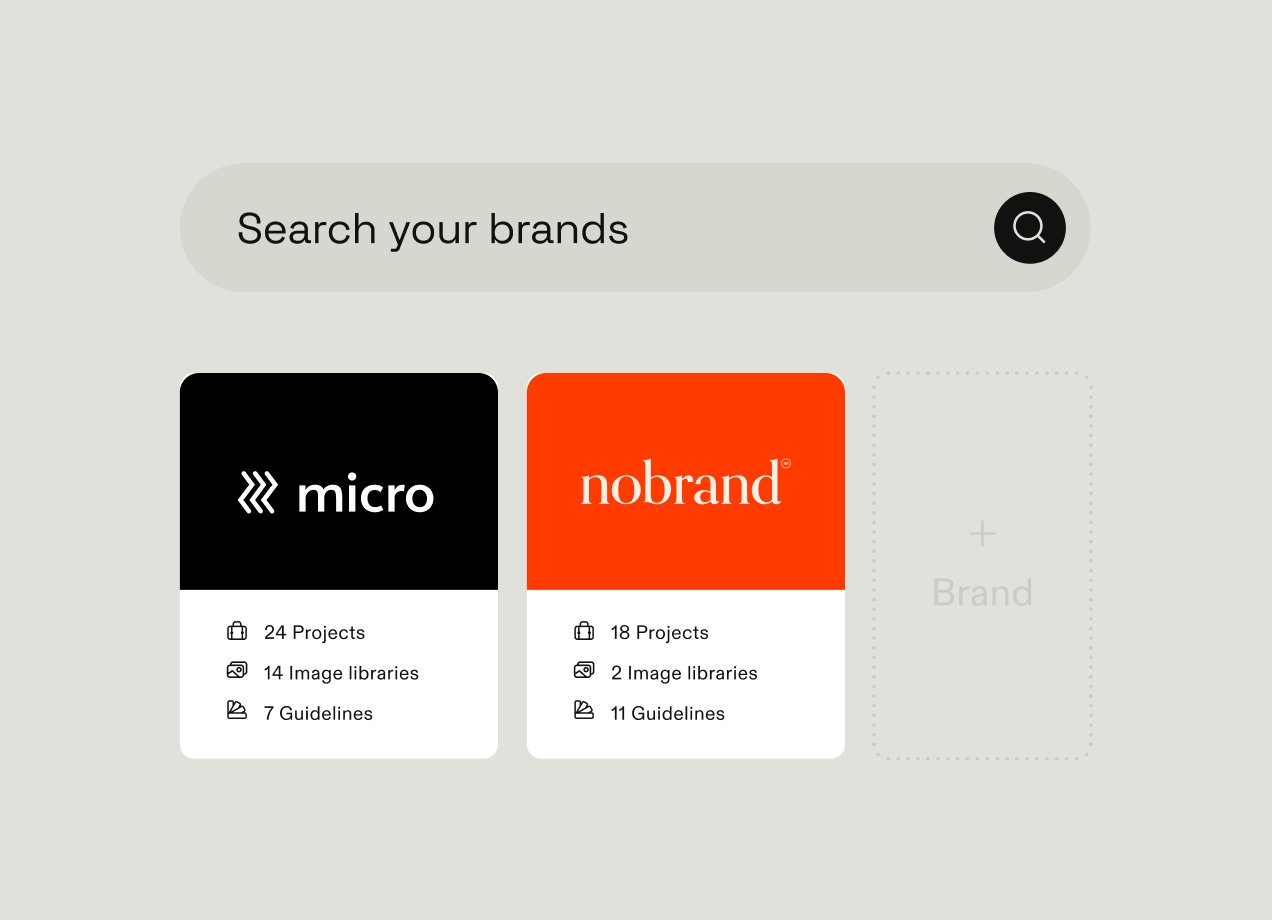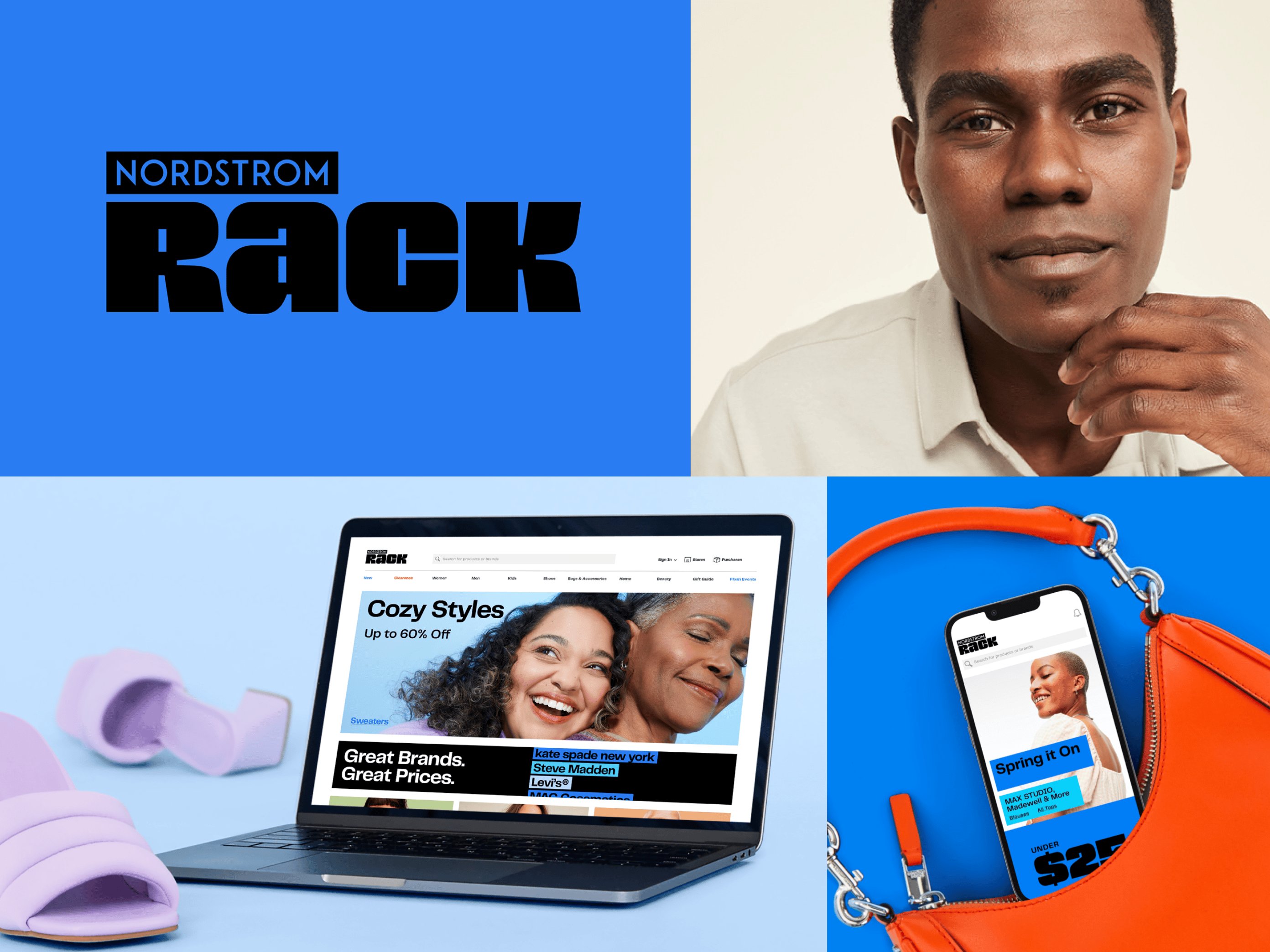A brand transformation is a strategic business initiative that goes beyond visual element updates to fundamentally realign how an organization presents itself to the world. Transformations can establish or reestablish a connection between business strategy, customer experience, and operational excellence.
Brand transformations are increasingly critical today as rapid changes in AI, rising customer expectations, and global competition all demand that companies continuously evolve or risk becoming irrelevant.
A successful brand transformation, one that’s well-planned and well-executed, strengthens market perception, deepens customer loyalty, boosts operational efficiency, and aligns employees around a shared vision. This article will show you how to make it happen.

What is brand transformation?
Brand transformation means fundamentally changing how a company is understood by employees and the public to match its purpose, brand strategy, culture, and growth plans. It goes beyond visual identity updates.
Typically, a brand transformation involves strategic repositioning, internal cultural alignment, operational changes, and more profound shifts in market perception. It’s linked directly to business strategy and growth objectives, involving engagement with core internal and external stakeholders across the organization.
Brand transformation vs. rebranding: Understanding the strategic difference
Compared to a rebrand, a brand transformation happens when you’re making large-scale changes internally and externally, and the changes affect how your company operates and delivers value.
A rebrand is primarily a change that involves external and cosmetic changes, and sometimes identity changes, like a new visual identity brand or new positioning.
The drivers behind brand transformation
The decision to undergo a brand transformation isn’t easy, but in many cases it’s necessary. There are a few main reasons — internal and external — that drive a company to transform its brand.
- Market & customer shifts: Customer expectations (e.g., sustainability, personalization, digital-first) force a brand to transform. For example, once shoppers expected to browse and buy online, retail brands with only physical stores had to transform into e-commerce and a digital-first brand experience.
- Business strategy changes: Mergers, acquisitions, or pivots require a unified brand direction. A transformation brings separate identities under one umbrella, helping employees and customers understand the new vision. For example, two merged tech companies might adopt a single name and updated look to signal a seamless customer experience.
- Technology & digitalization: Tech adoption, omnichannel marketing, and AI can disrupt brand delivery. Traditional workflows and static brand guidelines can’t keep pace with real-time updates and multi-channel demands, making a brand transformation necessary for dynamic governance systems that keep everything consistent and current.
- Internal culture & values: Transformations are tied to cultural shifts (e.g., DEI, sustainability, innovation). For example, a company that commits to stronger diversity and inclusion goals might transform its brand to reflect new values in its messaging, visuals, and employee experience.

What actually transforms during a brand transformation
A transformation isn’t just a new logo; it touches strategy, design, culture, and customer experience. Knowing what actually changes helps you scope the effort and set realistic expectations.
Strategic foundations
- Brand purpose & vision → Why the company exists and where it’s going.
- Brand positioning & unique value proposition → Who the brand serves and how it resonates with its target audience.
- Messaging architecture → Key narratives, tone of voice, and storylines that define the brand personality.
Visual identity
- Logo → Sometimes redesigned or modernized.
- Color palette & typography → Refreshed for consistency or to signal a new era.
- Design system → Updated icons, imagery, and illustration styles that create a unified look.
- Packaging & collateral → Updated to reflect changing customer needs and preferences.
Digital & physical experiences
- Website & app UX → Revamped to reflect new design language and customer expectations.
- Technology & digitalization → New technologies (e.g., with AI capabilities) introduce new ways to deliver brand experiences.
- Product interfaces → Aligning in-product branding with external identity.
- Customer journey touchpoints → Retail environments, service scripts, onboarding flows, support portals.
- Omnichannel presence → Social media tone, advertising creative, sponsorships, events.
Internal brand & culture
- Mission, vision, values rollout → Training employees on the new brand promise.
- Employee communications → Internal playbooks, intranets, and onboarding materials updated.
- Culture & behaviors → Embedding the brand’s core values (e.g., innovation, sustainability, DEI) into daily work.
Governance & enablement
- Guidelines → Moving from static PDFs to dynamic brand hubs.
- Templates & toolkits → For marketing, sales, HR, and external partners.
- Brand technology stack → DAM, design systems, AI-powered tools to enforce consistency.
Market expression
- Marketing campaigns & advertising → New marketing materials that are built to support the new marketing strategy and improve customer engagement.
- PR & thought leadership → Reframed narratives about company direction.
- Partnerships & sponsorships → Aligned with new positioning (e.g., sustainability partnerships, cultural collaborations)
Challenges in brand transformation
Brand transformations face real obstacles, but knowing these challenges upfront helps you plan realistically and avoid costly setbacks.
Organizational resistance
Employees may feel resistant to significant change, which often stems from fear of losing familiar workflows or skepticism about leadership’s vision. While it’s understandable that employees will be hesitant, it can stall adoption even when the strategy is sound.
Use change management tactics like training programs, engaging stakeholders throughout the timeline, and transparent communication to help with employee buy-in.
Global complexity
Global companies have unique challenges in brand transformation, especially if every market has different languages, cultural nuances, and regulatory requirements. Missteps can fragment the brand if market positioning isn’t clear, leading to confused customers.
Consider creating localization toolkits so your teams can easily adapt to local markets. These toolkits can include tasks like flagging sensitive imagery, translating key terms accurately, and outlining regulatory must-dos for each region.
Governance gaps
Outdated PDFs and scattered or siloed assets create version chaos. For example, governance gaps can leave teams to guess which tagline or logo is current, risking confusion and diluting the brand image. Without structure, costly mistakes are inevitable.
A successful transformation depends on live, centralized brand systems that update in real time and can be accessed across teams and regions. Make sure someone is responsible for keeping your brand system(s) up to date, decide who can add or edit assets, and set regular check-ins so updates roll out everywhere at the same time.
Cost & risk of failure
A poorly executed transformation can undo years of brand equity. Imagine a global rollout where some regions launch the new identity while others don’t: customers see conflicting logos and messaging, and they don’t understand the company’s new direction.
Protect your investment with a detailed rollout plan and a single source of truth for all final assets so every team launches in sync.
A step-by-step framework for brand transformation
1. Assess & audit current state
Take a clear inventory of everything tied to your brand: logos, templates, messaging, and key customer touchpoints. Check how well each asset follows current guidelines, where duplicates or outdated files live, and whether teams know where to find approved materials. Pair this with a review of brand equity and customer perception. Use surveys, social listening, and market research to see how people actually view the brand.
Next, create a baseline of brand health metrics so you can measure progress. Consider tracking the following metrics:
- Percentage of assets using the correct logo or colors (consistency)
- How often teams access or use approved tools and templates (adoption)
- Brand recognition scores or sentiment from surveys and analytics (awareness)
This data becomes your starting point for setting goals and proving the impact of the transformation.
2. Define transformation goals
Link your brand transformation directly to the company’s broader business strategy, whether it’s entering new markets, shifting to a digital-first model, or unifying after a merger. Gather executive and department leaders to agree on what success looks like, from market repositioning to internal culture shifts, so the brand’s direction supports long-term growth.
Make each goal measurable to avoid vague aspirations. For example, “Increase template adoption by X%,” “Shorten time-to-market campaigns by X days,” or “Boost brand awareness in key markets through brand recognition scores by X points/percent.”
Capture these decisions in a short transformation charter that outlines the business rationale, specific goals, key metrics, and ownership. This document becomes the shared roadmap that keeps leadership, creative teams, and regional markets aligned as the transformation moves forward.
3. Build governance & tools infrastructure
Strong governance keeps a transformation from unraveling as teams create and share new assets.
Centralized platforms like Frontify give teams a single hub for live guidelines, approved templates, and up-to-date assets, so no one relies on outdated PDFs or scattered folders. Features like role-based permissions prevent off-brand edits, while dynamic templates make it easy for local teams to customize content without breaking design rules, which helps you avoid “brand drift” in multi-market rollouts.
With a strong digital asset management system (DAM), live guidelines, and dynamic templates, updates cascade instantly across regions and campaigns. Integrations with creative and publishing tools (Adobe CC, CMS, CRM) embed governance into daily workflows, reducing errors and manual uploads.
Plus, with Frontify’s AI tools, such as Brand Assistant for tagging and content suggestions, you can further accelerate adoption and keep every asset on-brand as you scale.
4. Roll out in phases
Introduce the new brand in manageable stages, such as region-by-region or subbrand-by-subbrand. For example, a global company may roll out its brand transformation in Asia before launching in Europe and other regions.
Start with a pilot program to test guidelines, templates, and tools, gathering feedback to fix adoption issues before a full rollout. Remember that ROI depends on usage: even the best strategy fails if employees and partners don’t embrace the new brand.
Support adoption with intuitive tools, clear onboarding materials, and internal ambassador programs with employees who can champion the change. Small incentives — like recognition for early adopters or team milestones — can motivate teams to use the new systems consistently as the transformation expands.
5. Measure & iterate
A brand transformation needs ongoing measurement to stay effective. Track adoption (how often teams use approved templates and assets), consistency (percentage of materials following current guidelines), and ROI (time saved, cost reductions, or lift in brand awareness) across all markets. Use dashboards or analytics tools to spot trends and flag areas where teams struggle to comply.
Establish regular feedback loops. Use surveys, usage reports, and check-ins with regional teams to understand what’s working and where governance needs fine-tuning. Apply these insights to update guidelines, improve tools, and strengthen training, ensuring the brand evolves smoothly long after the initial rollout.
Why Frontify is built for brand transformation
Frontify gives teams a single place to manage every moving part of a transformation, so people spend less time chasing assets and more time bringing the new brand to life.
- Unified brand hub: One place for assets, guidelines, and templates, so designers, marketers, and regional teams always pull the same up-to-date materials. No more hunting down versions or last-minute file requests.
- AI brand assistant: Conveniently adhere to compliance and consistency in real time. Ask questions about logo, color, or font usage to easily determine if anything is off-brand.
- Multi-brand management: Easily oversee multiple brands or subbrands (ideal for companies navigating mergers, acquisitions, or regional variations) while still keeping a clear master brand identity.
- Interactive guidelines: Frontify’s tools support ongoing brand development through scalable guidelines. Swap static PDFs for living resources that update in real time and link directly to ready-to-use assets, so teams never wonder if they have the latest rules.
- Ease of use: Drive adoption across creative and non-creative teams. Frontify has a clean, intuitive interface where anyone can find, customize, and publish assets without heavy training.



